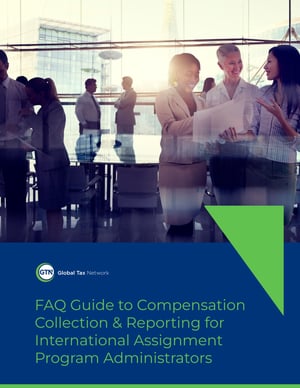The actual payroll process for international assignees is much more complicated than for domestic employees. Not only does an international assignee receive additional allowances in the form of cash or benefits-in-kind, but some of these allowances are likely to be delivered to the assignee in the Host country. Moving expenses and lease payments paid directly to the landlord may be paid through the Home or Host country accounts payable department or paid by the relocation management company (RMC). The Home country payroll department may not be aware of all these payments, but the program administrator should be.
Typically, the program administrator establishes a process to make sure that worldwide compensation data is collected and reviewed on a regular (e.g., monthly, quarterly) basis from the Host country. This information may be collected from the Host country payroll, finance, and/or human resources departments as well as the RMC. The data is reviewed by the program administrator to confirm it is complete and accurate before giving it to payroll to update the employee’s W-2. Thus, payroll supports—but is not responsible for—administering the international assignment program.
Another area of confusion for payroll is assignment length. Whether or not an allowance is taxable depends on the nature of the international assignment. The program administrator must notify the payroll department of the length of each assignment and of any changes that affect the taxability of compensation items. For example, while moving expenses are not deductible in the US for tax years 2018-2025 under US domestic rules, a short-term assignee coming to the US from a treaty country may be able to claim a treaty position whereby the employer-funded moving costs are not subject to US taxation. Depending on the wording of the relevant treaty clause, this may be the case where the assignee is present in the US for no more than 183 during the year (or period specified by the treaty), and all costs of remuneration are borne by the Home country entity.
The program administrator is often responsible for establishing and maintaining the infrastructure, policies, and procedures for a well-run international assignment program. Written policies and procedures are a basic requirement of an international assignment program. The policies and procedures should be distributed to, and discussed with, the Home and Host country payroll, finance, and human resources departments. International assignment payroll issues are unique and complex, requiring ongoing communications. Quarterly meetings with the Home country payroll department to review and discuss international assignment policies, procedures, and issues will help ensure a successful program.






